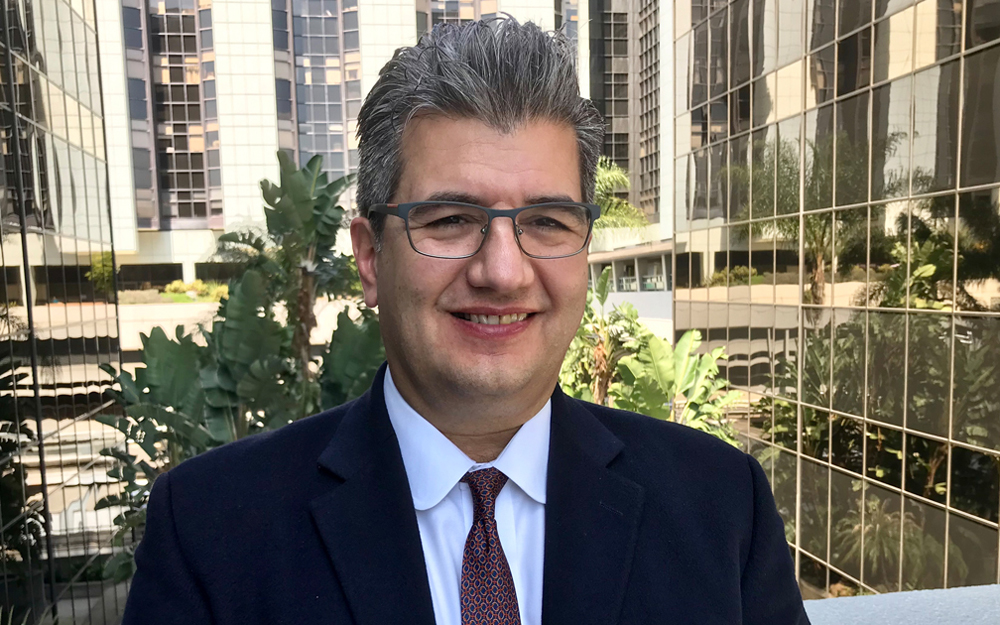Cedars-Sinai Blog
Faces of Cedars-Sinai: Dr. Maurice Garcia, Transgender Surgeon
Jun 13, 2019 Cedars-Sinai Staff

Dr. Maurice Garcia
Meet Dr. Maurice Garcia!
He's dedicated his career to helping patients of all ages deal with gender dysphoria with a variety of services, including education, surgery, care for adolescents, and more.
We chatted with him to learn more about his role and his life outside Cedars-Sinai.
Q: What do you do?
Dr. Maurice Garcia: I'm the director of the Cedars-Sinai Transgender Surgery and Health Program, which offers individualized care for patients seeking transition-related care.
Q: What do you do when you're not here at work?
MG: I have two boys—7 and 12. I spend time with them playing sports and going to their games.
I also like to travel locally and explore our area. I love little road trips—and then bigger trips to Mexico and visiting family since I have family in lots of places.
Q: What would you be doing for a living if you didn't pursue your current career?
MG: I like basic science. One of the things I do with the little free time I have is medical device design—designing patents, manufacturing, developing, stuff like that. I find it really fun and interesting.
I also like teaching. I take the opportunity to teach a lot of this stuff and start programs. It's another opportunity to travel and meet people.
Q: Where did you grow up?
MG: I grew up in Hollywood, California. I'm a local. But I was born in Monterrey, Mexico.
Q: Since you're a local, what's your favorite hidden LA spot and why?
MG: I love, love, love Grand Central Market downtown! And Clifton's Cafeteria. I just love those places.
Q: What is the best advice you've ever received?
MG: Don't be afraid to ask how things work, and don't be afraid to question dogma. That leads to pursuing observations that are in opposition to dogma, and that's what leads to discovery.
One of my surgery mentors told me that if you understand how things work, you can fix them—and it's only when you truly understand how they work. It's encouraged me to not stop at simple explanations for things, but to go beyond.
And more often than not, when you go a little bit further beyond, you discover new things. The most tantalizing situation of all is when you conclude that the dogma is wrong. At that point, you've contributed to science.
It's a real privilege to be able to say you've contributed to science and to medicine in some way—very few people do that in their careers. That's the goal.
In the Newsroom: Transgender Women Get Confidence Boost with Makeup Workshops
Q: How do you survive LA traffic?
MG: I give in—I don't fight it!
I do some of my best thinking in the car. I find it kind of meditative. I enjoy driving and seeing the city. I love drives that take me to weird routes that I'm not used to.
Q: What is the best concert you've ever been to?
MG: Elvis Costello at the Greek Theatre in Berkeley.
Q: What's your favorite movie and why?
MG: To Kill a Mockingbird. It's one of my very favorite movies because it's about social justice, which is always evolving.
One of the things I find so satisfying about my job is that it gives me an opportunity to provide care not only to people who are normally marginalized and denied good care by the medical establishment, but groups within that group that get even worse care—like Spanish-only speakers.
I'm Mexican American and fluent in Spanish. Last year, I was asked to go to Dodger Stadium for a Pride celebration.
When I got out on the field, I was thinking about how Chavez Ravine—the place where Dodger Stadium was built—was the site of a terrible period of social justice history right here in Los Angeles.
Working-class Mexicans got chased out of there so the land could be turned into Dodger Stadium. Universal Pictures bought a lot of the houses and put them on their lots, and the town in To Kill a Mockingbird used those same houses.
When I was standing on home plate, I was thinking about the LA cultural reference and how it came full circle.

